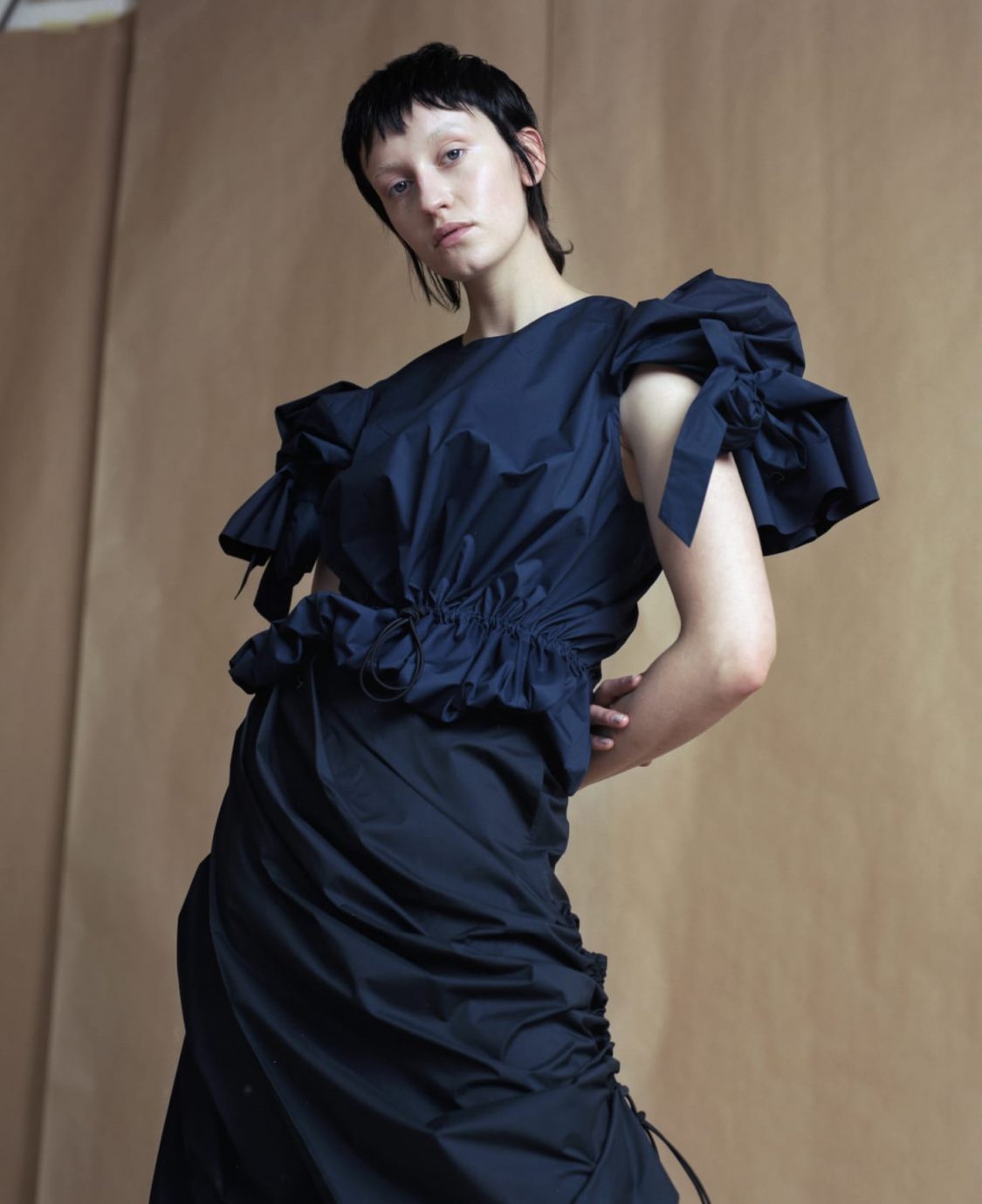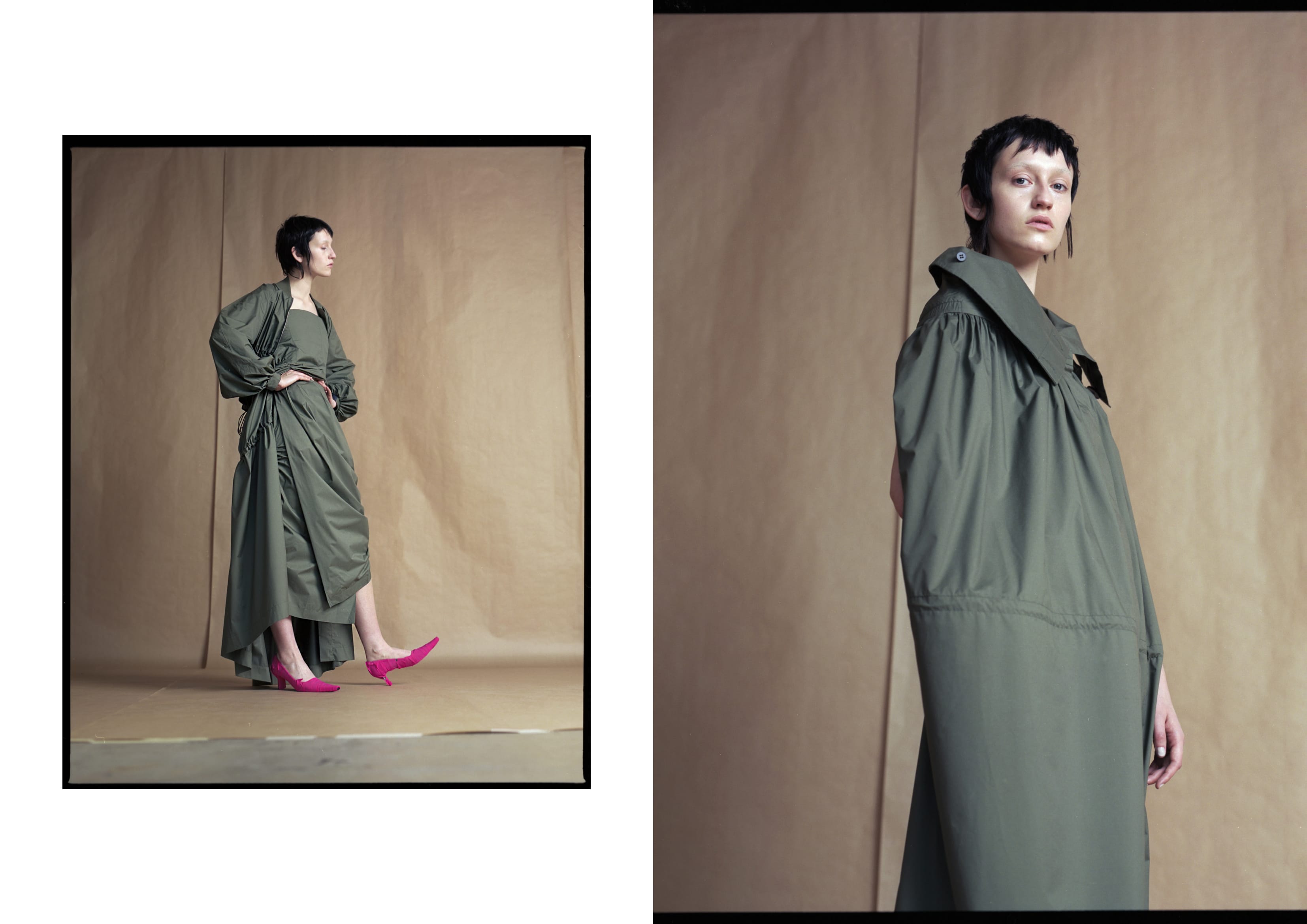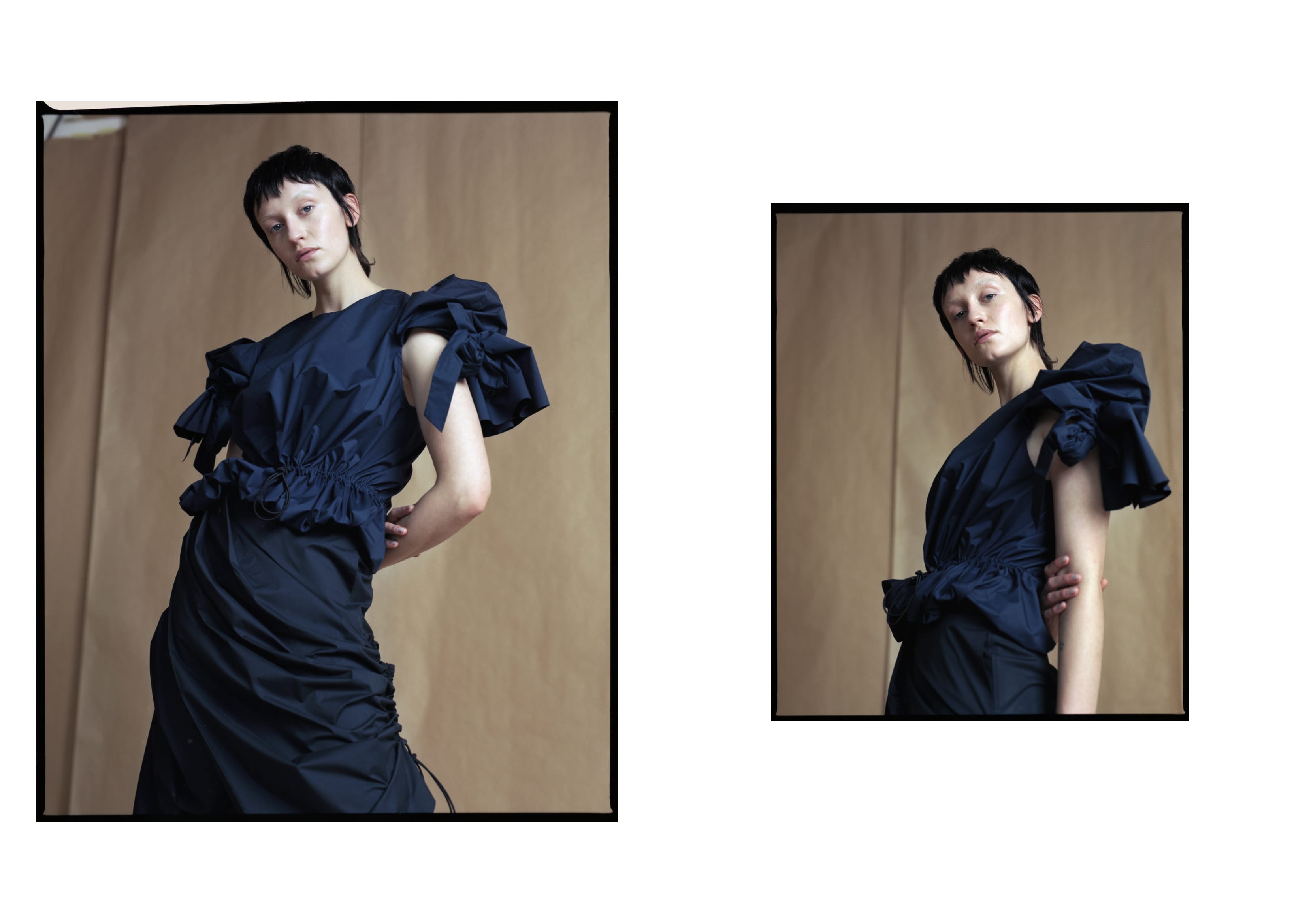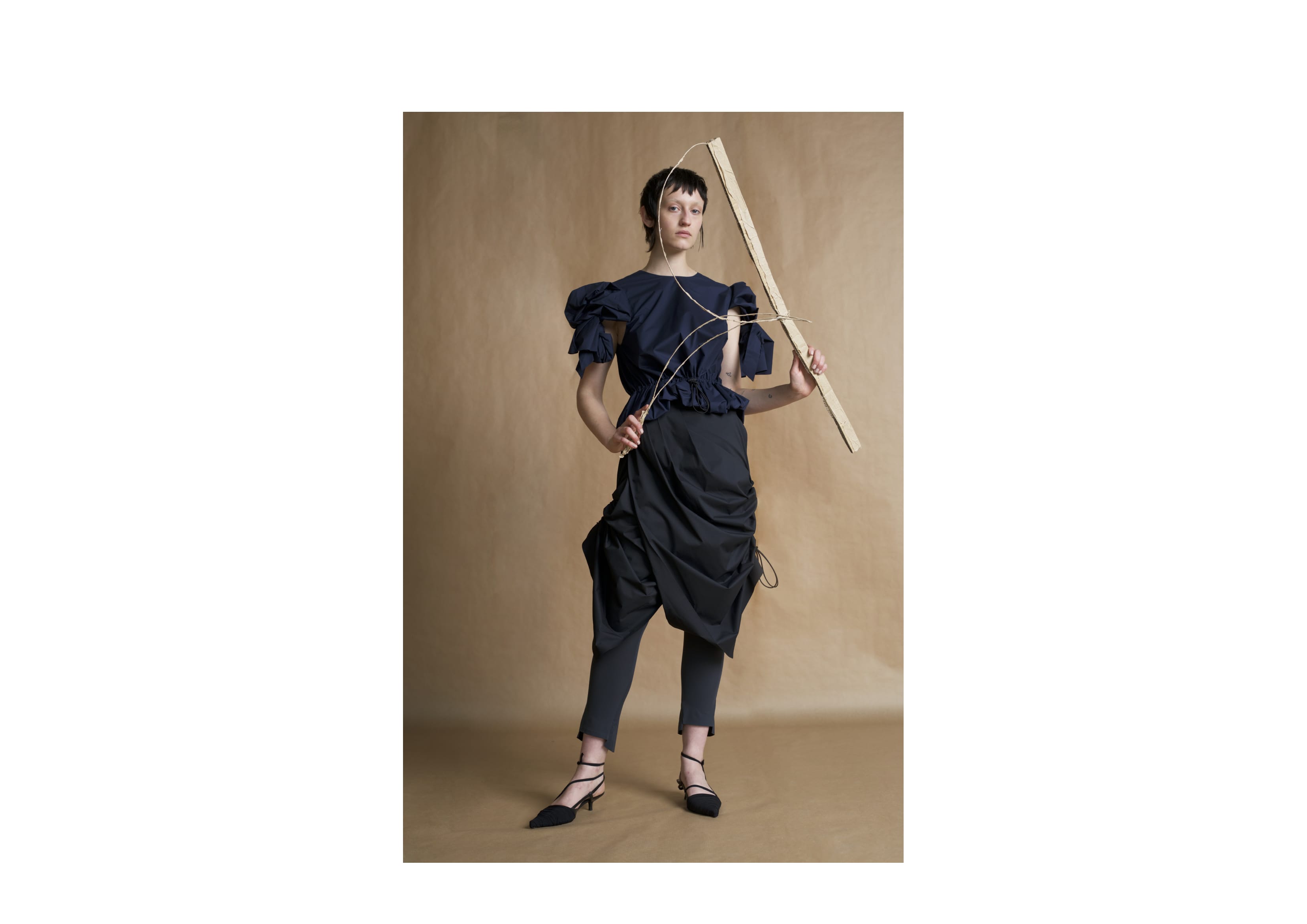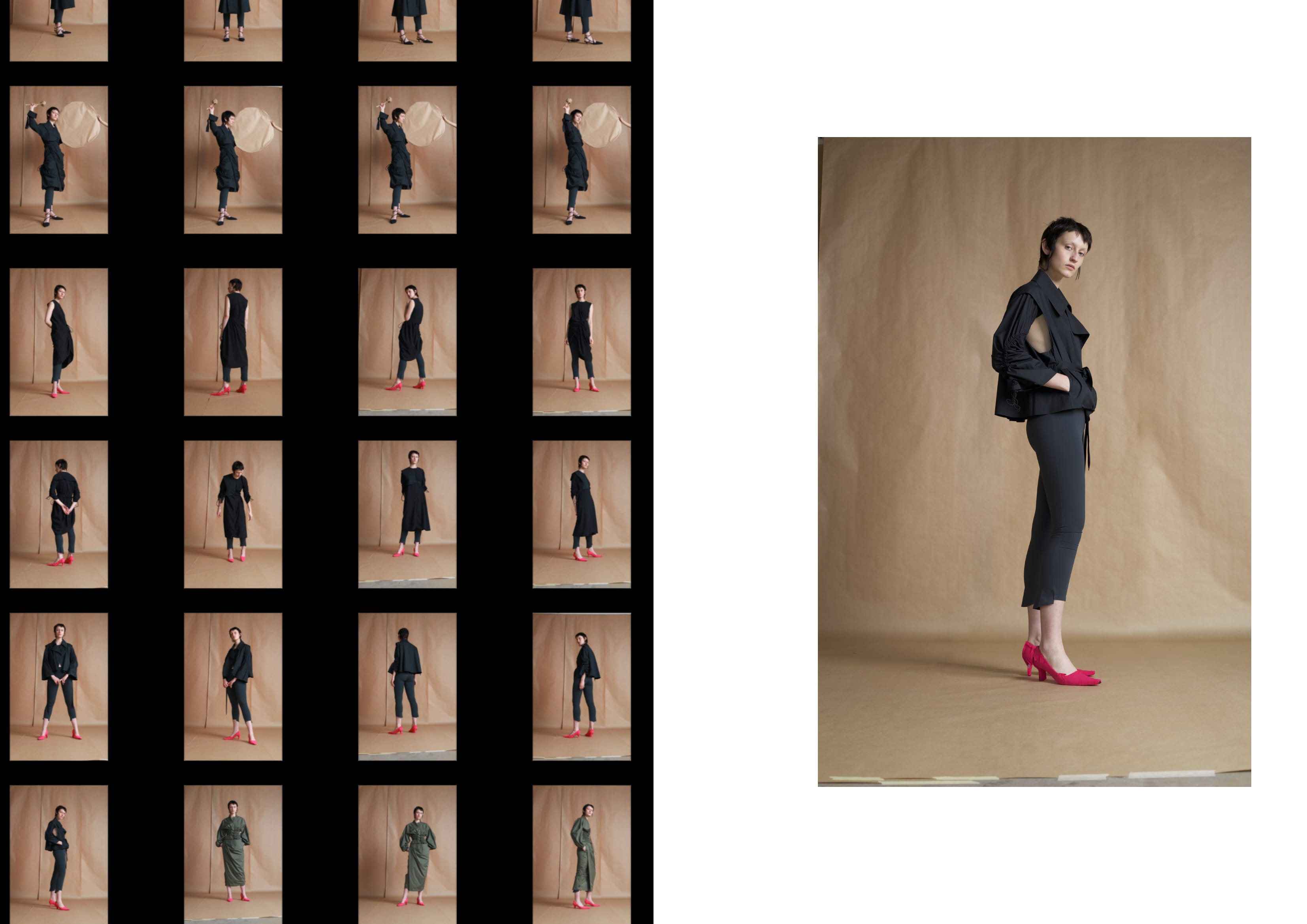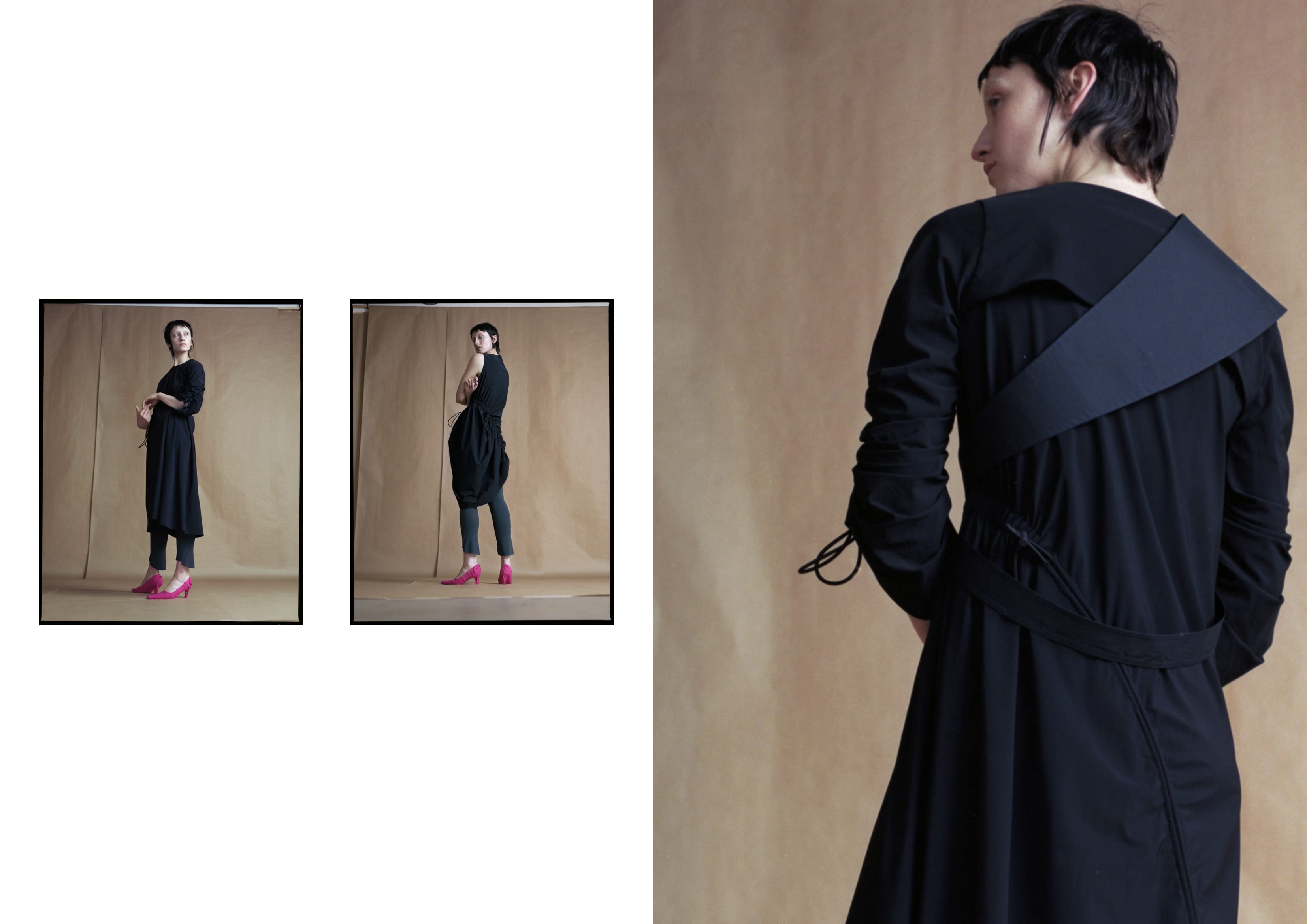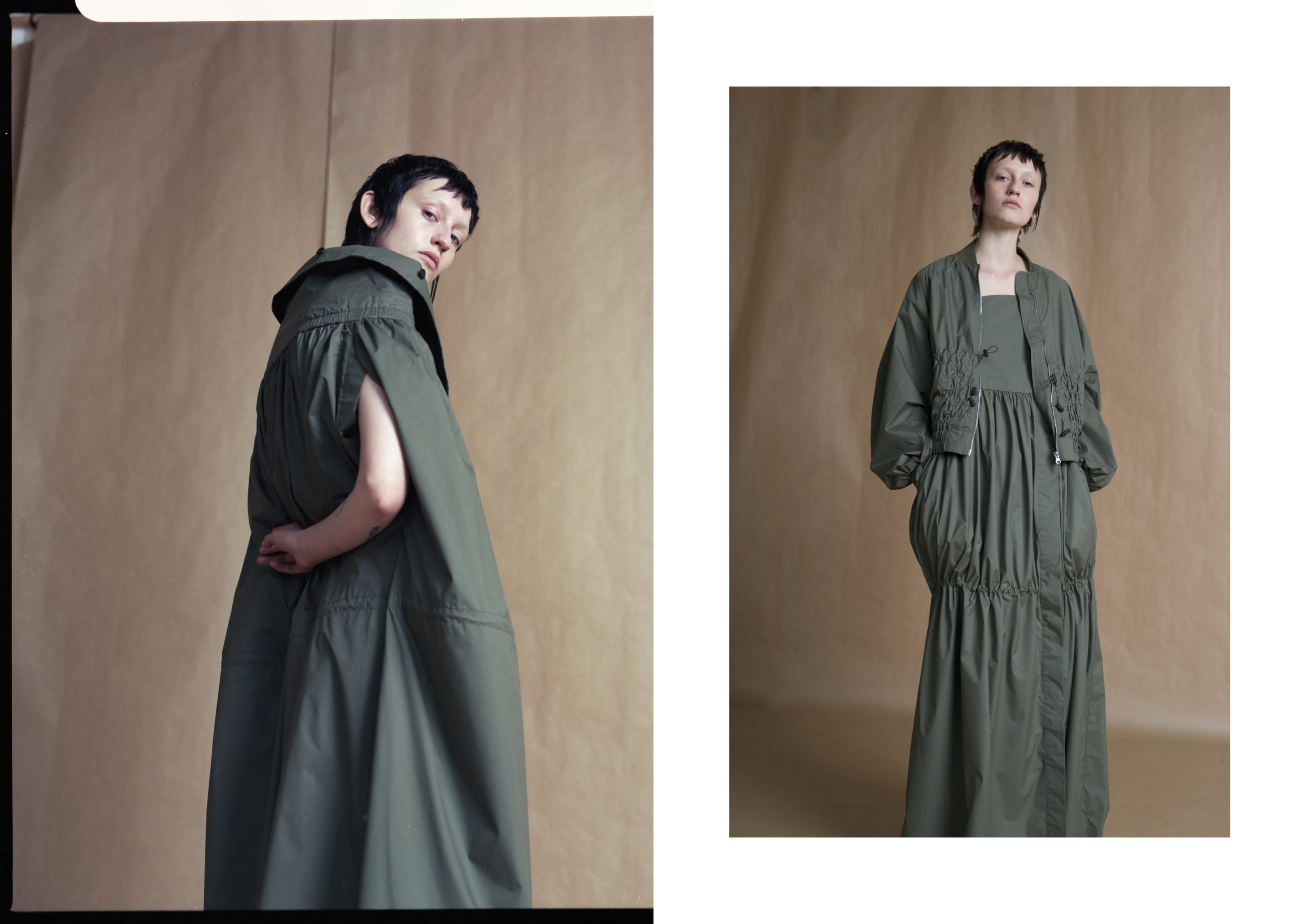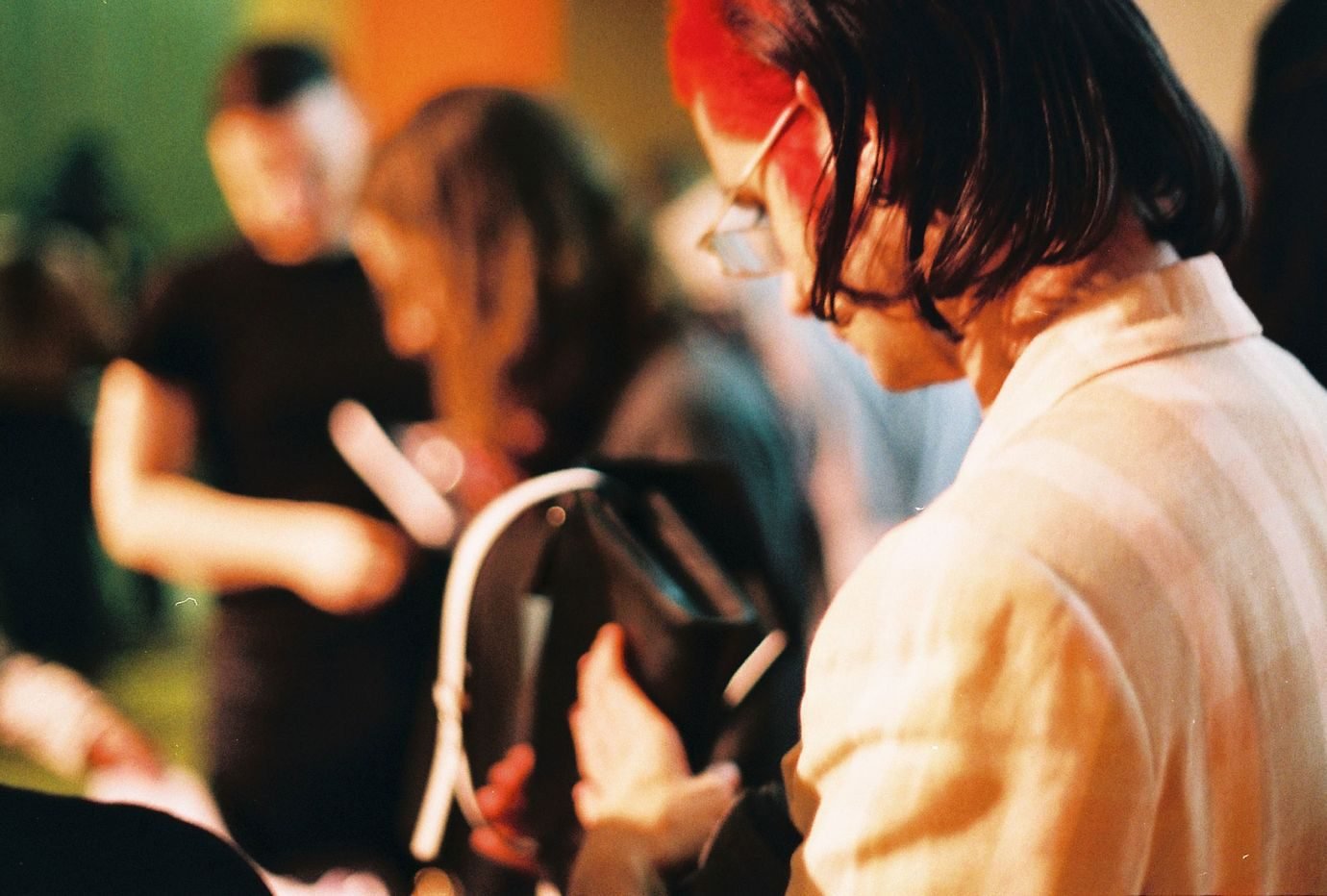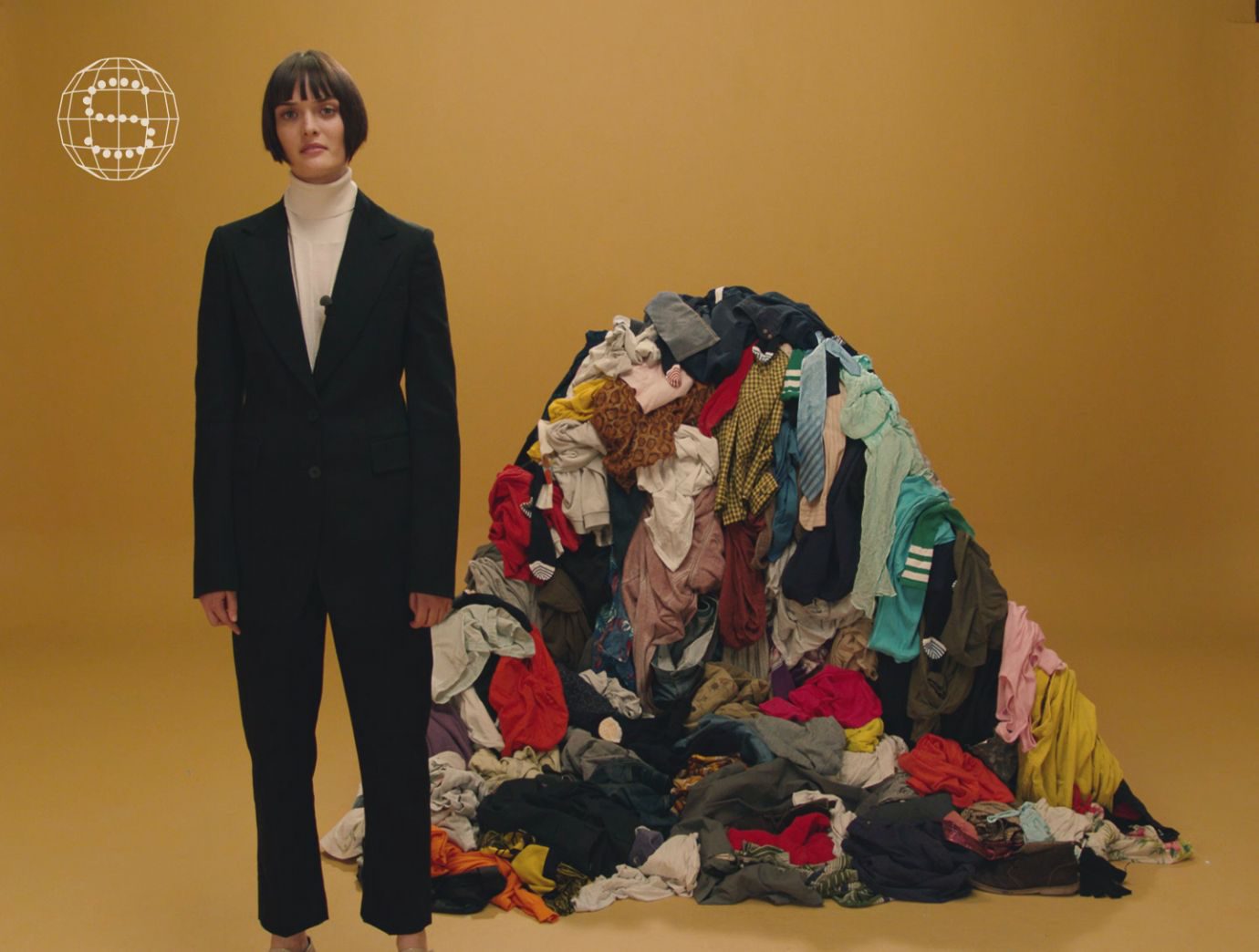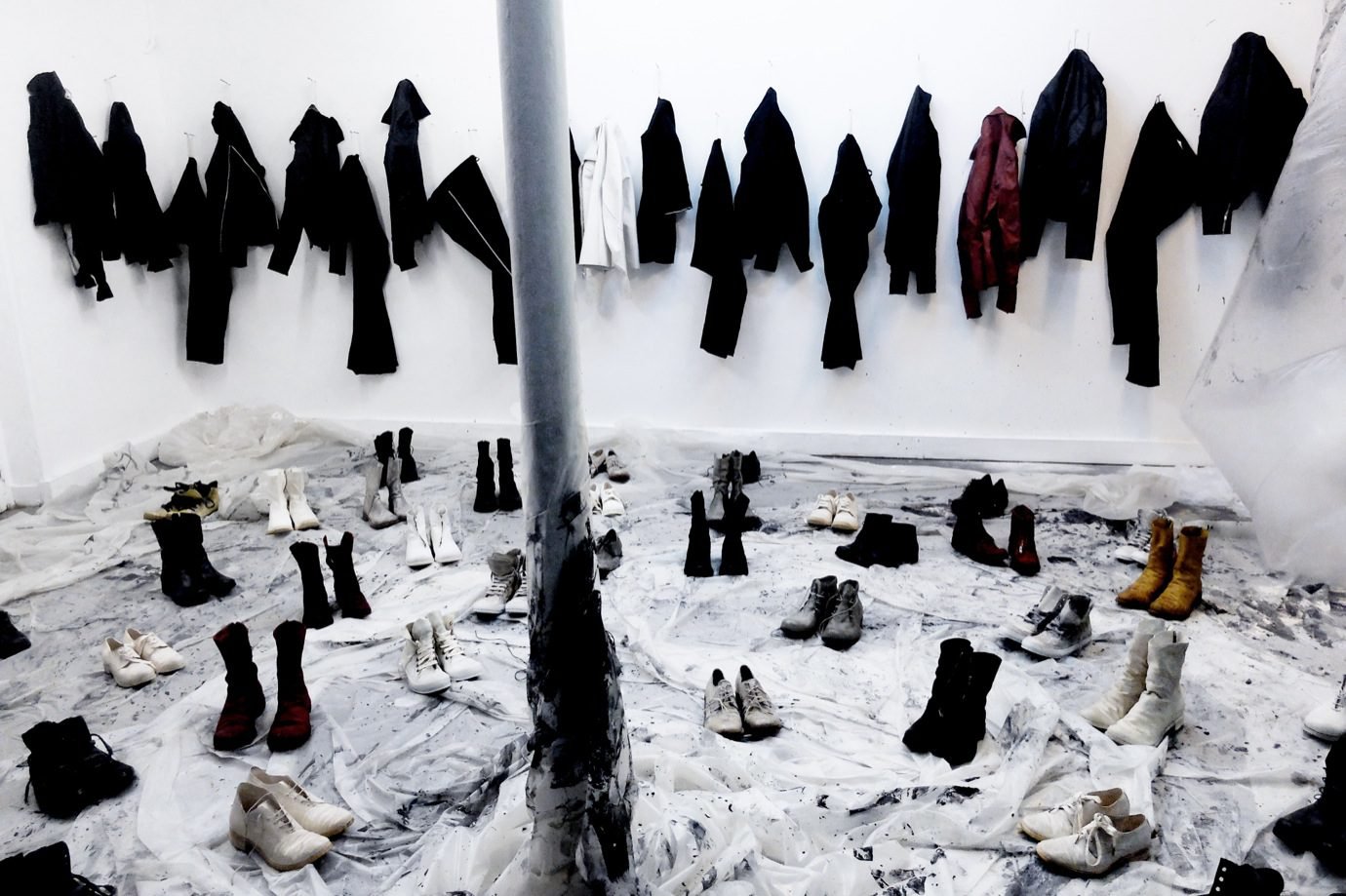Tell us about your collaboration with PHVLO.
Paula: So, we designed a collection for them. It was a competition and part of a project in the first year of the MA Fashion. The owner of PHVLO is Johanna Ho, who did the MA a while back under Louise Wilson.
Ernesto: She had her own brand, with many stores in Japan and China. She also had big sponsors who supported her during her career.
Paula: She stopped about six years ago.
Ernesto: And then she came out with this lifestyle-collaboration brand. Her idea is to collaborate with students and creative people all around the world. It is not about her, it is about people doing collections for them.
So this was a project about sustainability?
Paula: The fabric she uses is called MINOTECH™, a Japanese fabric. It is sustainable because it is made from recycled fabrics and very durable. Her idea is that you can create garments to use in a variety of occasions, a garment that you can change. We made a dress that was a parka at the same time, and other designs similar to that.
Ernesto: You can use that garment in 25 hours, so to speak.

